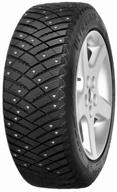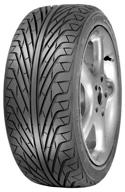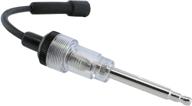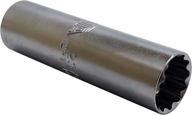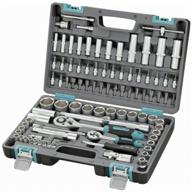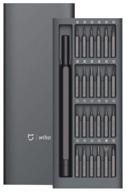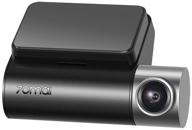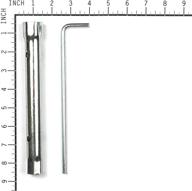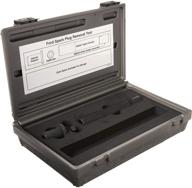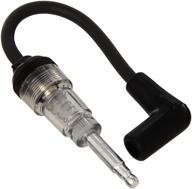Choosing the Right Spark Plugs for Your Vehicle
Selecting the proper spark plugs for your engine is important to ensure optimal performance and efficiency. The wrong spark plugs can lead to reduced power, poor fuel economy, and engine damage over time. Here are some key factors to consider when choosing spark plugs:
Similar products
Spark Plug Design
There are three main spark plug designs:
- Copper - Basic plugs with a solid copper core. They have a short service life.
- Platinum - Have a platinum disc welded to the tip which increases longevity. More expensive but can last up to 100,000 miles.
- Iridium - Have an iridium electrode that is extremely durable. Most expensive but can last up to 120,000 miles.
Heat Range
The heat range refers to a plug's ability to transfer heat from the combustion chamber into the engine head. There are different heat ranges available:
- Cold - Good for modified engines with higher compression, forced induction, or nitrous.
- Hot - Good for stock, naturally aspirated engines for everyday driving.
- In-between - For towing, hauling, frequent stop-and-go traffic.
Top products in 🔌 Spark Plug & Ignition Tools
Gap Style
The gap style affects the spark intensity:
- Fine wire - More concentrated spark for high performance engines.
- Wide gap - Broader spark for reliable ignition in average engines.
Reading Your Spark Plugs
You can diagnose engine issues by examining the spark plugs. Look for:
- Wear - Indicates potential issues with oil or fuel mixture.
- Fouling - Unburned fuel residue means the plug may be too cold.
- Corrosion - Sign of water in the combustion chamber.
Replacing spark plugs at the recommended intervals and using the right type for your engine will ensure optimal performance. Consult your owner's manual or a certified technician for specific recommendations.
Diagnosing and Replacing Faulty Spark Plugs
Spark plugs are crucial components in your vehicle's ignition system. Over time, they can become fouled, damaged, or simply wear out. Learning how to diagnose and replace faulty spark plugs is an essential maintenance skill for keeping your engine running properly.
Symptoms of Failing Spark Plugs
Watch for these common signs of bad spark plugs:
- Rough idle
- Misfires or sputtering acceleration
- Loss of power
- Reduced fuel efficiency
- Hard starting
- Check engine light
Another interesting products
Inspecting Spark Plugs
Carefully remove each spark plug one at a time and inspect them for issues like:
- Wear - Normal erosion of the electrode over time
- Damage - Cracks, broken insulator
- Corrosion - Rust deposits
- Fouling - Buildup of carbon, oil, fuel residues
- Incorrect gap - Should be 0.035 to 0.045 inches typically
Compare plugs from different cylinders - uneven wear can indicate issues in specific cylinders.
When to Replace Spark Plugs
You should replace spark plugs:
- Every 30,000 miles or as specified by manufacturer
- When inspecting reveals damage, extensive wear, or fouling
- When you tune-up ignition system
- When replacing ignition wires or coils
Spark Plug Replacement Tips
- Use anti-seize lubricant on plug threads to prevent seizing, ease removal later
- Tighten plugs to torque specs in owner's manual
- Don't overtighten or risk damaging the cylinder head
- Be careful not to crossthread plugs
- Reconnect wires and coils properly to avoid misfires
- Replace in pairs - never just one plug
DIY or Professional Replacement?
You can usually replace spark plugs yourself with basic tools. But consider having a technician do it if:
- The plugs are very old or difficult to access
- Special tools are required
- The cylinders are hard to reach
- It's your first time replacing them
Replacing faulty spark plugs at proper intervals keeps your ignition system operating at peak performance. Pay attention for symptoms and be prepared to replace them as needed.
Using Spark Plug Wire Testers and Tools
Testing and maintaining spark plug wires is important for engine performance. There are several specialized tools that make it easier to check for problems with plug wires:
Spark Plug Wire Tester
A spark plug wire tester is a simple device that allows you to check each wire individually. To use it:
- Attach the clip at one end to the spark plug wire you want to test.
- Attach the clip at the other end to ground (a metal bracket or the engine block).
- Crank the engine and check for a bright blue spark in the tester window.
- Repeat for each wire. A faint spark indicates that wire is worn and should be replaced.
Ignition Spark Tester
This tool tests the ignition coil's output without having to remove spark plug wires. To use it:
- Disconnect the ignition coil wire from the distributor cap.
- Connect the ignition tester between the coil wire and distributor cap.
- Crank the engine and check for a blue spark across the tester gap. No spark means the coil is bad.
Timing Light
A timing light allows you to visually inspect the spark at each cylinder. To use it:
- Connect the timing light to the cylinder you want to test.
- Crank the engine and activate the strobe light. This will "freeze" the spark for inspection.
- Look for a consistent, bright blue spark. Weak or yellow sparks indicate issues.
Spark Plug Gap Tool
This simple tool lets you measure and adjust the gap between the spark plug electrodes. Follow your owner's manual for the proper gap spacing.
Spark Plug Socket
A spark plug socket has a rubber insert that helps grab and hold the spark plug when removing or installing them. Use it along with a ratchet wrench.
Anti-Seize Lubricant
Apply a small amount of anti-seize lubricant to spark plug threads before installing them. This prevents corrosion and makes future removal easier.
Using the proper spark plug wire testers and tools allows you to keep your ignition system in top shape. Periodically check wires, coils, timing, and spark plug gaps for peak engine performance.
Maintaining Your Vehicle's Ignition System
The ignition system is responsible for generating and delivering spark to the engine's cylinders to ignite the air-fuel mixture. Proper maintenance is key to keeping it in good working order.
Inspect Wires and Connections
Examine ignition wires and boots for:
- Cracks or damaged insulation
- Corrosion on wire terminals
- Loose connections
Repair or replace any worn components. Ensure all connections are clean and tight.
Replace Spark Plugs
Change spark plugs at the intervals recommended by your owner's manual, usually every 30,000 miles. Signs you need new plugs:
- Poor fuel economy
- Misfires or rough idle
- Hard starting
- Failed emissions test
When installing new plugs, check the gap and apply anti-seize compound to the threads.
Inspect Distributor Cap and Rotor
Look inside the distributor cap for:
- Corrosion
- Cracks or carbon tracking
- Burned or worn rotor tip
Replace distributor cap and rotor if any wear is found. Clean inside the distributor housing.
Check Timing
Incorrect ignition timing can reduce performance and economy. Use a timing light to adjust timing to vehicle specifications.
Consider Upgrades
Upgrading components like wires, plugs, cap, and rotor can optimize ignition performance. For extreme upgrades, consider a high-output coil, amplified box, or switch to electronic ignition.
Well-maintained ignition components ensure reliable spark delivery to the engine for smooth running and optimum efficiency.
Spark Plug Socket Size Toyota
The Toyota spark plug socket size is 5/8 inches or 15.86mm, according to a Toyota spark plug socket size chart. This size is also commonly included in metric or standard 3/8" drive ratchet sets. The Toyota Corolla spark plug socket size is 9/16 inches. A 5/8 inch spark plug socket is recommended for Toyota vehicles. When using a 5/8 inch spark plug socket, there is a rubber insert inside the socket that "grips" the spark plug and helps prevent breaking the ceramic insulator on the spark plug. If the spark plug is stuck inside the socket, it is suggested to wrap the extension and spark plug socket with electrical tape to keep them from coming apart.
Spark Plug Socket Set
Here are some spark plug socket sets that can be found on various online stores:
- WORKPRO 6PC Magnetic Swivel Spark Plug Socket Set
- Milwaukee 3/8 in. Drive 9/16 in., 5/8 in., 13/16 in., 14 mm, and 18 mm Spark Plug Socket Set (5-Piece)
- ARES 5-Piece Magnetic Swivel Spark Plug Socket Set
- Powerbuilt 640855 Spark Plug Socket Set, 5 Piece, 3/8 In. Dr.
- CRAFTSMAN 4-Piece Standard (SAE) and Metric 3/8-in Drive 6-point 3/8-in Spark Plug Socket Set
- AutoZone Spark Plug Socket
These spark plug socket sets come in different sizes and designs to fit various spark plug types and engine configurations. It is important to choose the right size and type of socket for your vehicle to avoid damaging the spark plug or the engine.









